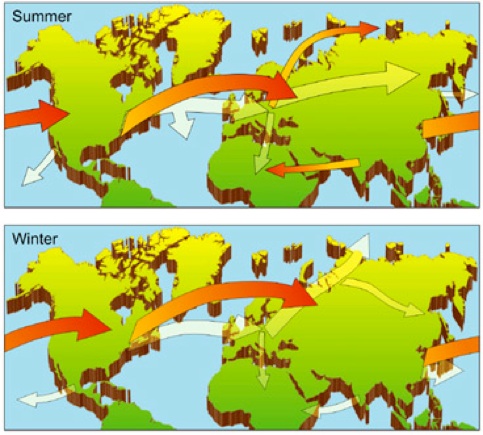
About Us
Our research goal is to understand precursor emissions, chemical processes, and transport that determine the global distributions of tropospheric ozone and aerosols, and to characterize the influence of global climate and chemical change on regional air quality and the effects of regional pollution on the global atmosphere. We work on global and regional 3-dimensional (3-D) modeling and analysis of satellite, aircraft, and ground observations. We use the GEOS-Chem global 3-D model of tropospheric chemistry-aerosols, the CMAQ regional air quality model driven by WRF, and the WRF-Chem model. A particular research focus is chemical data assimilation and inverse modeling using the aforementioned models and (in some cases) their adjoints. We work closely with satellite teams including TES, MLS, MISR, AIRS, MOPITT, MODIS, SCIAMACHY, and OMI, among others. We have close collaborations with satellite instrument teams at the Jet Propulsion Laboratory. The group leader is Prof. Qinbin Li. There are currently position openings for undergraduate and graduate students as well as postdocs.
Here are a couple of examples of our research activities:
-
1.Global mapping of carbon dioxide (CO2) from space
http://photojournal.jpl.nasa.gov/catalog/PIA09269
http://www.terradaily.com/reports/AIRS_Global_Map_Of_Carbon_Dioxide_From_Space_999.html
http://climaterealists.com/forum/viewtopic.php?f=2&t=70
Here is a report at
http://www.physorg.com/news142861794.html
Here is some interesting commentary on this study by Anthony Watts at
http://wattsupwiththat.com/2008/07/29/co2-well-mixed-or-mixed-signals/
2. Exporting Pollution
http://seedmagazine.com/content/article/exporting_pollution/
“WE SEND IT TO EUROPE; THEY SEND IT TO ASIA. BUT WHAT HAPPENS WHEN CHINA STARTS SENDING MORE OUR WAY?”







